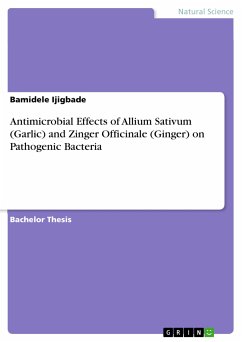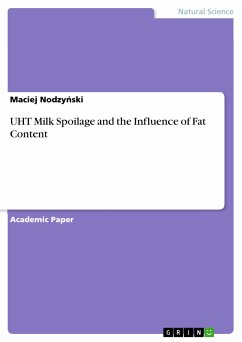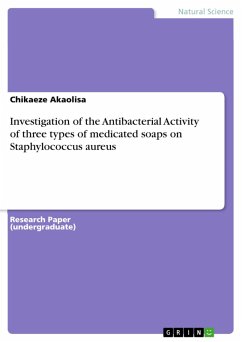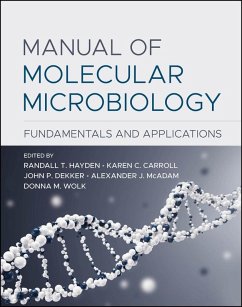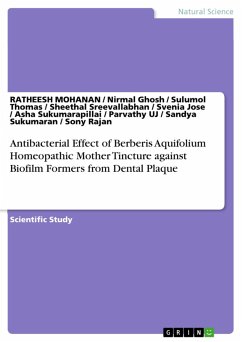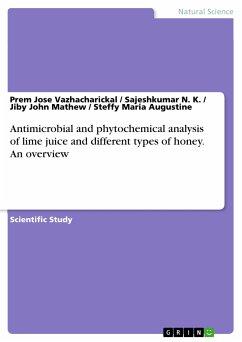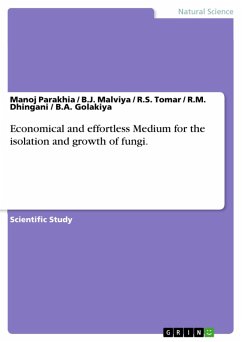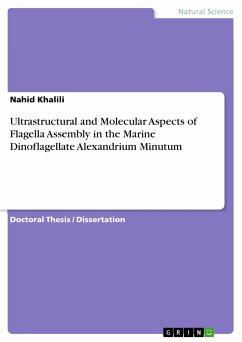
Ultrastructural and Molecular Aspects of Flagella Assembly in the Marine Dinoflagellate Alexandrium Minutum (eBook, PDF)

PAYBACK Punkte
0 °P sammeln!
Doctoral Thesis / Dissertation from the year 2013 in the subject Biology - Micro- and Molecular Biology, University Kebangsaan Malaysia, language: English, abstract: Dinoflagellates are microscopic unicellular microalgae found in aquatic environments worldwide. One common feature of dinoflagellates is the presence of two unequal flagella: The longitudinal flagellum is round while the transverse flagellum is ribbon-shaped. Currently little is known about the intracellular ultrastructure of the dinoflagellate flagella apparatus and molecular aspects of the flagella assembly are unknown. In this ...
Doctoral Thesis / Dissertation from the year 2013 in the subject Biology - Micro- and Molecular Biology, University Kebangsaan Malaysia, language: English, abstract: Dinoflagellates are microscopic unicellular microalgae found in aquatic environments worldwide. One common feature of dinoflagellates is the presence of two unequal flagella: The longitudinal flagellum is round while the transverse flagellum is ribbon-shaped. Currently little is known about the intracellular ultrastructure of the dinoflagellate flagella apparatus and molecular aspects of the flagella assembly are unknown. In this study a combination of ultrastructure studies using scanning (SEM) and transmission electron microscopy (TEM), and molecular analysis of transcriptomics data was used to gain understanding on the flagella apparatus of the toxic marine dinoflagellate Alexandrium minutum. Samples for SEM and TEM observations were prepared using standard protocols. For transcriptomics analysis, total RNA was harvested from exponential phase cultures during the light and dark culture periods. The transcriptome was sequenced using HiSeq sequencing, assembled and annotated. The assembled sequences were searched for putative genes involved in flagella synthesis, assembly and functioning based on annotations and reverse Blast analysis. The putative genes were used in phylogenetic and in silico protein analysis. Transcriptome sequencing produced 399,169 unigenes, of which 412 were related to flagella biosynthesis and function. Structural flagella genes found were a, ß and ¿ dynein; a, ß and ¿ tubulin; radial spoke, basal body, central pair wd, central pair pf20, flagellar protofilament ribbon protein, calcium binding, sodium-type flagellar motor component and nexin. There were also several intraflagellar transport (IFT) genes namely 20, 27, 52, 57, 74, 80, 81, 88, 122 and 172. The other flagella related genes found were genes for kinesin II and cytoplasmic dynein 2. Ultrastructure observation by TEM showed that the Cells had the typical dinoflagellate organelles. The chloroplast contained two or three apprised thylakoids, and was surrounded by three membranes, the eyespot is located dorsally and composed of one or two layers of globules situated within the chloroplast, In the periphery of the cell, trichocysts, mucocysts, and unidentified multilayered material were visible This study provided for the first time a large volume of gene data that can be used to better understand the molecular basis of flagella biosynthesis and function in dinoflagellates.
Dieser Download kann aus rechtlichen Gründen nur mit Rechnungsadresse in A, B, BG, CY, CZ, D, DK, EW, E, FIN, F, GR, HR, H, IRL, I, LT, L, LR, M, NL, PL, P, R, S, SLO, SK ausgeliefert werden.





